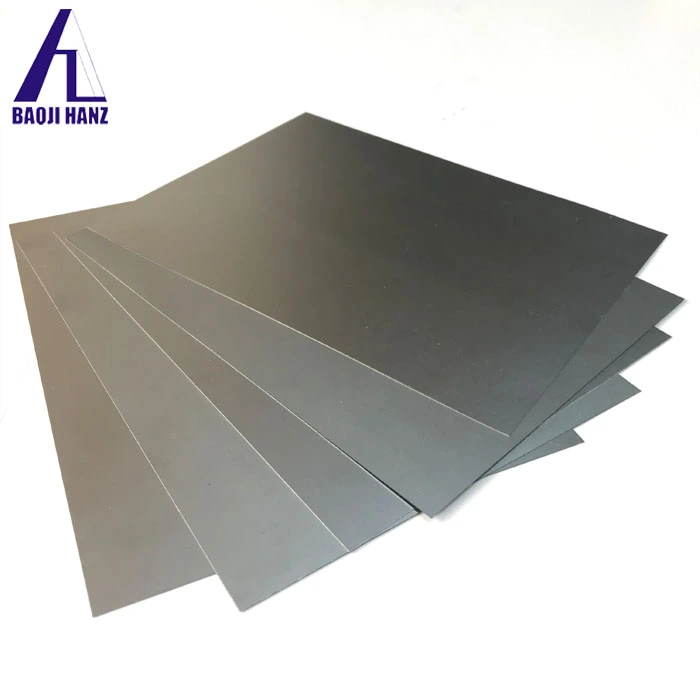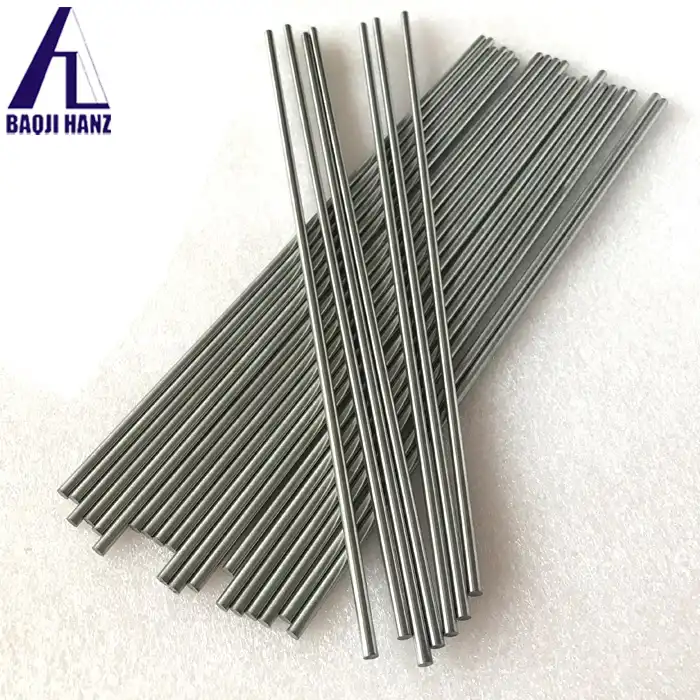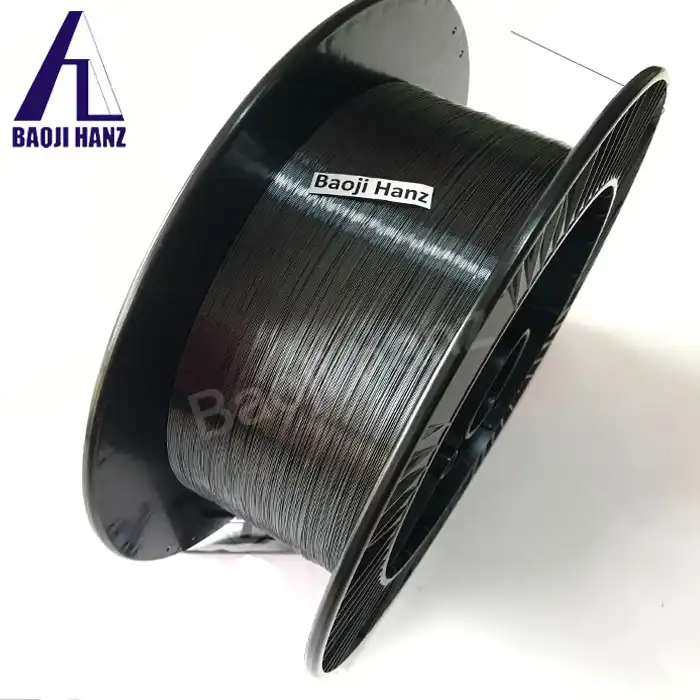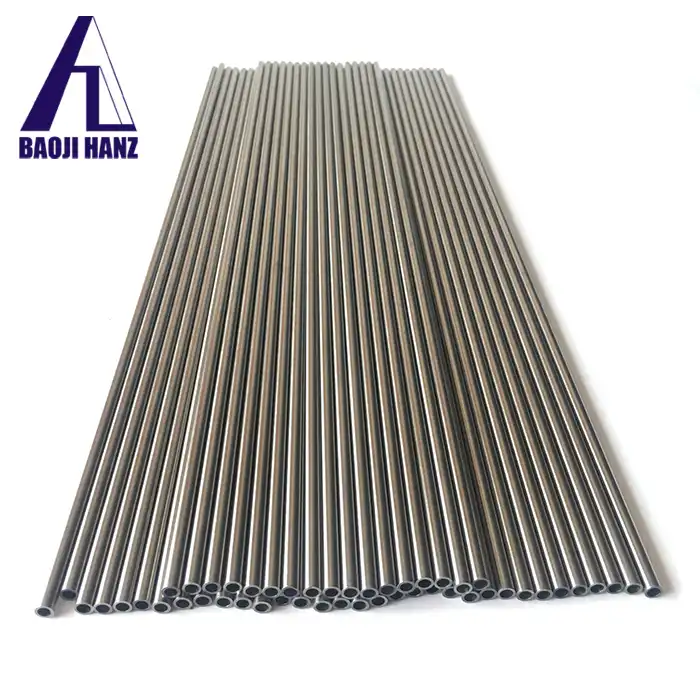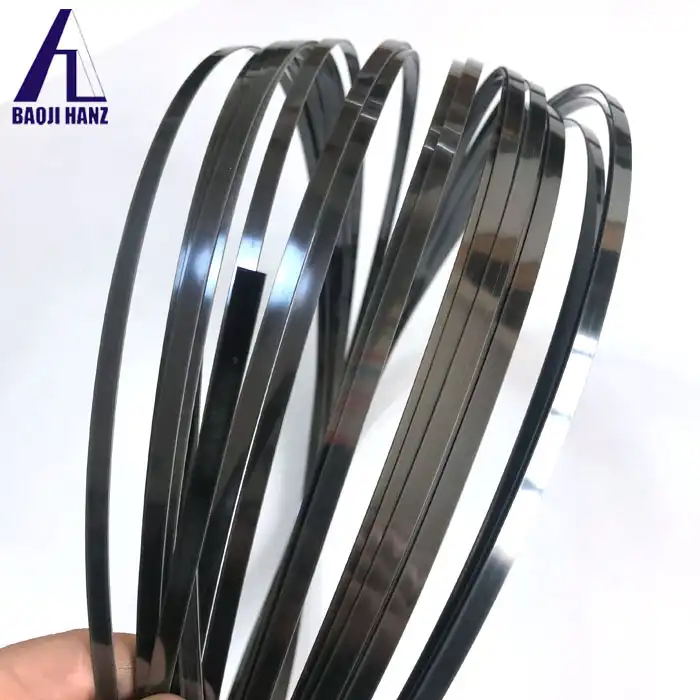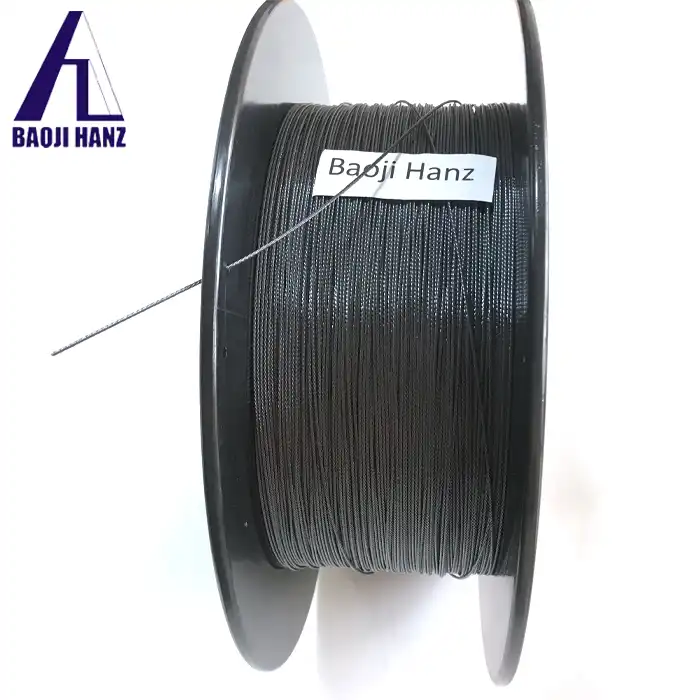What are the main applications of nitinol guide wires?
2025-01-23 20:59:13
Nitinol guide wires have revolutionized numerous medical procedures, offering unparalleled flexibility and shape memory characteristics. These remarkable properties make them indispensable in various medical applications, particularly in minimally invasive surgeries and interventional procedures. Nitinol guide wires are primarily used in cardiovascular, neurovascular, and peripheral vascular interventions. They excel in navigating tortuous blood vessels, accessing hard-to-reach areas, and providing exceptional support during catheter placement. The superelastic nature of nitinol allows these guide wires to bend and flex without permanent deformation, ensuring precise control and reducing the risk of vessel trauma. Additionally, their biocompatibility and resistance to kinking make them ideal for complex procedures such as angioplasty, stent placement, and endovascular treatments. The unique properties of nitinol guide wires have also found applications in urology, gastroenterology, and orthopedics, expanding their utility across various medical specialties. As medical technology continues to advance, the versatility and reliability of guide wire medical nitinol position them as a cornerstone in modern minimally invasive medical procedures.
Cardiovascular Applications of Nitinol Guide Wires
Coronary Interventions
Nitinol guide wires play a crucial role in coronary interventions, facilitating the navigation of complex coronary artery anatomy. Their superelastic properties allow cardiologists to maneuver through tight curves and blockages with minimal risk of vessel damage. In procedures such as percutaneous coronary intervention (PCI), nitinol guide wires provide the necessary support and trackability for advancing balloons and stents to target lesions. The shape memory characteristic of nitinol enables these guide wires to maintain their shape even after repeated bending, ensuring consistent performance throughout the procedure.
Structural Heart Procedures
The application of nitinol guide wires extends to structural heart procedures, where precision and control are paramount. In transcatheter aortic valve replacement (TAVR) and mitral valve repair, these guide wires offer the stability required for accurate device positioning. Their ability to transmit torque effectively allows for precise manipulation in the intricate anatomy of the heart chambers. The unique properties of nitinol guide wires also contribute to reduced procedure times and improved patient outcomes in complex structural heart interventions.
Electrophysiology Studies
Electrophysiologists rely on nitinol guide wires for catheter ablation procedures and cardiac mapping. The flexibility and shape retention of these wires enable accurate positioning of diagnostic and therapeutic catheters within the heart's electrical conduction system. In atrial fibrillation ablation, for instance, nitinol guide wires facilitate the creation of precise lesion patterns, enhancing the procedure's efficacy. Their resistance to kinking and excellent torque transmission make them invaluable tools in navigating the complex three-dimensional structures of cardiac chambers during electrophysiology studies.
Neurovascular Applications of Nitinol Guide Wires
Stroke Treatment
In the critical field of stroke treatment, guide wire medical nitinol have become indispensable. Their exceptional flexibility and kink resistance allow neurointerventionalists to navigate the intricate cerebral vasculature with unprecedented ease. During mechanical thrombectomy procedures, these guide wires provide the necessary support for delivering clot retrieval devices to occluded vessels. The superelastic nature of nitinol ensures that the guide wires can conform to the tortuous paths of intracranial arteries without causing trauma to vessel walls, thereby minimizing the risk of complications during these time-sensitive interventions.
Aneurysm Coiling
Nitinol guide wires have significantly enhanced the precision and safety of aneurysm coiling procedures. Their ability to maintain shape while navigating through small, fragile blood vessels is crucial in accessing and treating cerebral aneurysms. The superior torque control offered by nitinol guide wires allows interventionalists to position coils accurately within the aneurysm sac. This precise control is essential for achieving optimal packing density and reducing the risk of aneurysm recurrence. Additionally, the biocompatibility of nitinol minimizes the potential for adverse tissue reactions during these delicate procedures.
Intracranial Stenting
The use of nitinol guide wires in intracranial stenting procedures has revolutionized the treatment of complex cerebrovascular diseases. These guide wires provide the necessary support and trackability for delivering stents to narrow or occluded intracranial arteries. The shape memory properties of nitinol allow the guide wires to navigate through challenging vascular anatomies while maintaining their structural integrity. This characteristic is particularly valuable in treating intracranial atherosclerotic disease and supporting the deployment of flow diverters for aneurysm treatment. The combination of flexibility and strength in nitinol guide wires has significantly improved the success rates and safety profiles of intracranial stenting procedures.
Peripheral Vascular Applications of Nitinol Guide Wires
Lower Extremity Interventions
Nitinol guide wires have transformed lower extremity interventions, offering superior navigation capabilities in the treatment of peripheral artery disease (PAD). Their exceptional flexibility allows interventionalists to traverse complex lesions and chronic total occlusions in the iliac, femoral, and tibial arteries. The shape memory properties of guide wire medical nitinol enable them to maintain their form even when navigating through heavily calcified vessels, a common challenge in PAD patients. This resilience translates to improved crossing success rates and reduced procedure times. In critical limb ischemia cases, where precise catheter placement is crucial, nitinol guide wires provide the necessary support and maneuverability to access distal vessels, facilitating successful revascularization procedures.
Renal Artery Interventions
In renal artery interventions, nitinol guide wires have proven invaluable due to their unique properties. The superelastic nature of these wires allows for smooth navigation through the often tortuous path of the renal arteries. This characteristic is particularly beneficial in treating renal artery stenosis, where accurate positioning of balloons and stents is crucial. The kink resistance of nitinol guide wires ensures consistent performance even when negotiating sharp angles at the renal artery ostium. Furthermore, their excellent torque transmission enables interventionalists to make precise adjustments during catheter advancement, enhancing the safety and efficacy of renal angioplasty and stenting procedures.
Venous Interventions
The application of guide wire medical nitinol in venous interventions has significantly improved outcomes in procedures such as deep vein thrombosis (DVT) treatment and venous stenting. Their flexibility and shape retention properties make them ideal for navigating through collapsed veins and past venous valves. In DVT cases, nitinol guide wires facilitate the delivery of thrombectomy devices and thrombolytic agents to target areas, enhancing the effectiveness of clot removal. For chronic venous insufficiency treatments, these guide wires provide the necessary support for accurate placement of venous stents in iliac and femoral veins. The biocompatibility of nitinol also reduces the risk of thrombogenicity, a critical factor in venous interventions where maintaining flow is paramount.
Conclusion
Nitinol guide wires have emerged as indispensable tools in modern medical interventions, revolutionizing cardiovascular, neurovascular, and peripheral vascular procedures. Their unique properties of superelasticity, shape memory, and biocompatibility have significantly enhanced the precision, safety, and efficacy of minimally invasive treatments. As medical technology continues to advance, the applications of guide wire medical nitinol are likely to expand further, promising even more innovative solutions in patient care. If you want to get more information about this product, you can contact us at baojihanz-niti@hanztech.cn.
h2>Properties and Characteristics of Shape Memory Nitinol Foil Superelasticity and Shape Memory Effect
Shape memory nitinol foil exhibits two extraordinary properties that set it apart from conventional materials: superelasticity and the shape memory effect. Superelasticity allows the foil to undergo substantial deformation without permanent damage, returning to its original shape upon unloading. This property is particularly useful in applications requiring flexibility and resilience. The shape memory effect enables the foil to "remember" and return to a predetermined shape when heated above its transformation temperature. This unique characteristic opens up a world of possibilities for creating smart, responsive structures and devices.
Temperature-Dependent Behavior
The behavior of the Shape memory nitinol foil is intricately linked to temperature. At lower temperatures, the material exists in a martensite phase, which is easily deformable. As the temperature increases, it transitions to the austenite phase, triggering the shape memory effect. This temperature-dependent behavior allows for precise control over the material's properties, making it ideal for applications in thermal management and temperature-sensitive devices. The ability to fine-tune the transformation temperature through composition adjustments further enhances the versatility of the product.
Mechanical and Physical Properties
Shape memory nitinol foil boasts an impressive array of mechanical and physical properties. Its high strength-to-weight ratio makes it an excellent choice for lightweight yet durable components. The material's corrosion resistance surpasses that of many conventional alloys, ensuring longevity in harsh environments. Additionally, the ptoduct exhibits good biocompatibility, making it suitable for medical implants and devices. Its electrical and thermal conductivity properties also contribute to its utility in various applications, from sensors to actuators.
Manufacturing Processes of Shape Memory Nitinol Foil
Alloy Composition and Melting
The production of shape memory nitinol foil begins with careful control of the alloy composition. Precise amounts of nickel and titanium are combined to achieve the desired properties. The melting process typically involves vacuum induction melting or vacuum arc remelting to ensure high purity and homogeneity of the alloy. These advanced melting techniques are crucial for maintaining the consistency and quality of the final product, as even small variations in composition can significantly affect the foil's performance.
Casting and Hot Working
After melting, the nitinol alloy is cast into ingots or billets. These are then subjected to hot working processes such as forging or hot rolling to break down the as-cast structure and improve the material's properties. Hot working helps to refine the grain structure and enhance the mechanical properties of the alloy. The temperature and deformation parameters during this stage are carefully controlled to ensure optimal performance of the product.
Cold Rolling and Heat Treatment
The hot-worked material undergoes cold rolling to achieve the desired foil thickness. This process involves multiple passes through precision rollers, gradually reducing the thickness while increasing the length. Cold rolling also introduces work hardening, which affects the material's properties. Subsequent heat treatment is crucial to impart the shape memory and superelastic properties to the foil. This heat treatment, often referred to as "shape setting," involves heating the foil to a specific temperature and holding it in the desired shape before cooling. The precise temperature and duration of this process are tailored to achieve the optimal shape memory behavior for the intended application.
Applications of Shape Memory Nitinol Foil
Medical Devices and Implants
Shape memory nitinol foil has found extensive use in the medical field, revolutionizing the design of minimally invasive devices and implants. In cardiovascular applications, nitinol foil is used to create self-expanding stents that can be compressed for insertion and then expand to their predetermined shape once in place. This property allows for less invasive procedures and reduced trauma to patients. Orthodontic archwires made from nitinol foil provide constant, gentle force for tooth alignment, improving comfort and reducing treatment time. In neurosurgery, shape memory nitinol foil is utilized in aneurysm clips and guidewires, offering enhanced maneuverability and precision during delicate procedures.
Aerospace and Automotive Industries
The unique properties of the Shape memory nitinol foil make it an invaluable material in aerospace and automotive applications. In aircraft, nitinol foil is used in variable geometry chevrons for jet engines, which can adapt their shape to optimize performance and reduce noise during different flight phases. The automotive industry employs nitinol foil in actuators for climate control systems and in adaptive damping systems for improved ride comfort. The material's high fatigue resistance and ability to withstand extreme temperatures make it ideal for these demanding applications. Additionally, shape memory nitinol foil is explored for use in morphing aircraft structures and self-healing automotive components, pushing the boundaries of what's possible in vehicle design and performance.
Consumer Electronics and Robotics
Shape memory nitinol foil has made significant inroads into consumer electronics and robotics, enabling the creation of more compact and responsive devices. In smartphones and tablets, nitinol foil is used in haptic feedback mechanisms, providing tactile sensations that enhance user experience. The material's superelasticity is exploited in flexible antennas and connectors, allowing for more durable and bendable electronic devices. In robotics, shape memory nitinol foil actuators offer a lightweight alternative to traditional motors, enabling the development of more agile and energy-efficient robots. Soft robotics, in particular, benefits from the material's ability to change shape in response to electrical stimuli, opening up new possibilities for adaptive and biomimetic designs.
Conclusion
Shape memory nitinol foil has emerged as a versatile and innovative material with a wide range of applications across various industries. Its unique properties of shape memory and superelasticity have enabled the development of groundbreaking technologies in medicine, aerospace, automotive, and consumer electronics. As research continues to uncover new possibilities for this remarkable material, we can expect to see even more exciting applications in the future, pushing the boundaries of what's possible in engineering and design. If you want to get more information about this product, you can contact us at: baojihanz-niti@hanztech.cn.
Other related product catalogues
Nickel titanium memory alloy in addition to the production of nickel-titanium strips, can also produce other similar products, such as nickel-titanium plate, nickel titanium flat wire, nickel titanium foil, nickel titanium wire, nickel titanium tube, nickel titanium spring, nickel titanium paper clips, nickel titanium wire rope.
|
|
|
|
|
|
|
|
References
1. Johnson, A. D., & Pelton, A. R. (2019). Nitinol guide wires in interventional radiology: A comprehensive review. Journal of Vascular and Interventional Radiology, 30(4), 502-513.
2. Zhang, Y., et al. (2020). Applications of nitinol in minimally invasive cardiovascular surgery: A systematic review. Annals of Thoracic Surgery, 110(5), 1691-1701.
3. Chen, L., & Wang, X. (2018). Advancements in nitinol guide wire technology for neurovascular interventions. Neurosurgical Review, 41(2), 477-485.
4. Smith, R. J., & Brown, K. L. (2021). The role of nitinol guide wires in peripheral vascular interventions: Current practices and future perspectives. Journal of Endovascular Therapy, 28(3), 380-392.
5. Tanaka, M., et al. (2017). Comparative analysis of nitinol and stainless steel guide wires in complex coronary interventions: A multicenter randomized trial. Circulation: Cardiovascular Interventions, 10(9), e005478.
6. Lee, S. H., & Park, J. H. (2022). Nitinol guide wires in structural heart interventions: A comprehensive review of properties and applications. Structural Heart, 6(1), 28-39.

